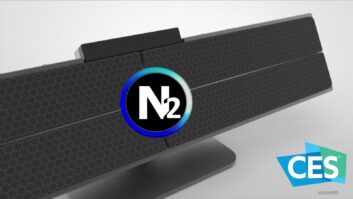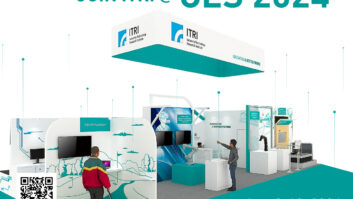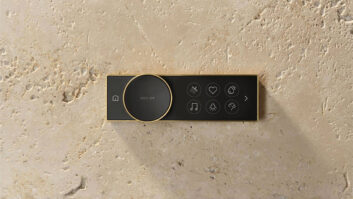More wired and wireless audio-network devices turning up here at International CES let music follow consumers as they roam around the house.
Many of the systems take shape as adapters to connect to existing sound systems, but suppliers are also launching dedicated networked-audio systems.
Many of the elements are in place to make networked-audio the next big thing, but it’s not yet part of the audio mainstream for a variety of reasons, suppliers said. The issues include consumer awareness, software-development costs, limited software-development expertise by traditional CE suppliers, supplier concern over network-technology obsolescence and the challenges of overcoming latency.
On the upside, however, Ethernet-network installations in new homes have become commonplace, no-new-wires network technology has dropped in cost, PCs laden with downloaded and ripped music have turned into de facto music servers, and potential whole-house sources have proliferated to include network-attached storage devices, iPods and Internet radio.
Here’s what suppliers plan to show:
Logitech: The $399-suggested Wi-Fi-based Squeezebox Duet system comes with a handheld multiroom controller, which features a 2.4-inch color screen to view a menu, song metadata and PC-stored album art. The remote controls a tabletop receiver, or digital media adapter (DMA), that connects to existing sound systems and streams music from a networked PC, which must be loaded with Squeeze Center software, or directly from Logitech’s Internet radio and music-aggregation service.
One remote will control multiple receivers in multiple rooms. Anywhere from six to eight different songs can be streamed simultaneously over a wireless 802.11g network to as many different receivers. If the receivers are networked via wired Ethernet, the practical limit on the number of different streams is about 16, the company said. The limit is based on the user’s system and network configuration, whether someone is streaming Internet radio rather than PC-based music files, and the file formats they are using, said Jim Carlton, product marketing director.
Additional controllers are a suggested $299 each, and additional receivers are $149. They’re equipped with Wi-Fi 802.11b/g. Shipment begins in January.
The new system, like its predecessor, is an open system that lets third parties add plug-ins to its PC software. One currently available plug-in allows users stream Sirius Satellite Radio’s Internet streams to the PC and from there to a Squeezebox. Logitech, however, is talking with the satellite-radio providers to enable Squeezebox access to the Internet services through Logitech’s aggregation service so that a PC doesn’t have to be running.
Philips: The company is updating its current selection of wireless multizone hard-drive-equipped music systems, wireless hard-drive music server, and wireless clients, including a client with amplifier and speakers, a client with only an amplifier, and a client with neither amp nor speaker for connection to any existing sound system.
The updates include album-art display, color display on one model and other features with no price changes.
The company is also reentering the wireless DMA market, after a two-year absence, with the Wi-Fi-equipped NP1100 network music player, due in the second quarter at a suggested $149. It connects to any home audio system to stream music from a PC and accesses free Internet radio stations and Real’s Rhapsody streaming-music subscription service directly through a Wi-Fi-equipped broadband modem.
PowerLinx: The company turned to its own proprietary powerline-network technology to develop a series of wall-wart-type transmitters and receivers due in the first quarter.
The Tune Dog series of products is designed to distribute music from PCs and iPod docks via included cables, while the Audio Everywhere series is intended to distribute music from connected stereo systems. Music can be distributed to PowerLinx-supplied active speakers and standalone amplifiers, which can drive speakers of the user’s choice. The systems don’t provide for control of a source from a remote room.
The company will also offer packages for surround-speaker use.
A basic Tune Dog system with two wall warts and cables retails for a suggested $169. A basic Audio Everywhere system with sender, receiver and cables also retails for $169.
Russound: The custom-install supplier plans to display its iBridge Dock PLC, which uses HomePlug A/V powerline-network technology to distribute iPod-docked music and metadata throughout the house.
The dock, due in the second quarter at an unannounced price, can be used with the company’s existing multiroom-audio equipment via a companion receiver.
ZyXEL: A HomePlug-equipped DMA1100P Digital Media Streamer, due in February at a suggested $269, streams audio and video at datarates up to 200Mbps. It supports 1080i high-definition video streams from a PC or network-attached storage (NAS) also equipped with HomePlug. It incorporates universal plug-and-play (UPnP) to automatically recognize other UPnP-equipped devices, including PCs and home-A/V devices, and it is certified by the Digital Living Network Alliance (DLNA) for compatibility with other DLNA devices.
It’s the company’s first HomePlug DLNA.













